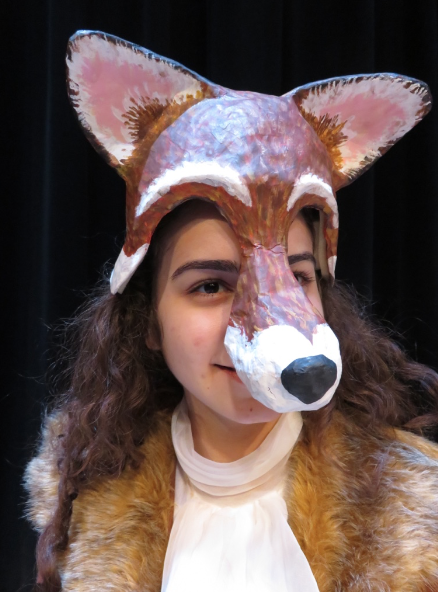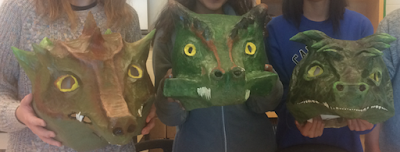What does the Fox say?
Step 1:Making a clay base
I created the shape I wanted the mask to have with clay over a paper base. Because it was my first time making a mask like this at home I had to get a little creative with the base and how I was supporting the head. As I was making the nose it was getting a little droopy with the weight of the clay so I stuck a knife into my form to get the nose something to rest on. Probably not the way other would do it but in the spur of the moment it fixed the problem and worked for what I was doing.
Step 2: Paper Mache
When the paper is dry it is time to take the mask off your clay form. Pull you mask off the base form and flip it over and pull out all the clay. Sometimes you might need to cut the paper to be able to release it but no worries that will get fixed in the next step.
Once your mask is off the form and the clay is out and you have just paper it is time to make any changed you would like. This is when you can cut out eye holes and any other cutting you would like to add. When you cut holes you will have a rough edge that will need to be paper mache over. If you had to cut you mask off the form then at this time you will use your paper mache to connect and seam the mask up.
Just like before be sure to take care to smoothing all your edges so that your piece will not have any weird bumps and grooves. When you are happy with how the piece looks and you have put a few layers of paper on to make your edges smooth it is time to wait again for all the paper to be fully dry.
Of course the week that I was making my fox mask it was SO rainy. Normally I would sit the mask out in the sun to let nature help speed up the process. But after a full 24 hours the mask was still damp because of the weather. I had to get clever and bring in my space heater to move things along. I made sure to be near the mask and not leave it unattended sitting in front of the heater and very soon I was happy to find it dry FINALLY! Which meant I could move on to the last step in the process.
Step 4: Painting and Finishing Work
When the mask was all the way dry I was able to start painting it and really bringing it to life. I already had the suit to use as the base for the costume and I attached the faux fur to the lapels and made a tail and attached it to the pants. Because I didn't have a paint that matched exactly I used several paints and created a stroke pattern to mimic hair. With layering the colors I was able to create a similar color as well as giving the appearance of hair.
 After the paint was all finished and dry I glued a layer of foam to the inside to make the mask more comfortable for the actor to wear. I also put in a ribbon strip along the bottom edge so the actor could put in some bobby pins to hold the mask in place.
After the paint was all finished and dry I glued a layer of foam to the inside to make the mask more comfortable for the actor to wear. I also put in a ribbon strip along the bottom edge so the actor could put in some bobby pins to hold the mask in place. Paired the outfit with some tan and white oxfords, white gloves and a white ruffle front shirt (I liked the ruffles because it mimics the white fur at the foxes neck) the costume all came together. I am really happy with how my first paper mache mask I made independently came out, and I am very thankful for all the new skills I learned over the last summer.
Paired the outfit with some tan and white oxfords, white gloves and a white ruffle front shirt (I liked the ruffles because it mimics the white fur at the foxes neck) the costume all came together. I am really happy with how my first paper mache mask I made independently came out, and I am very thankful for all the new skills I learned over the last summer.

Comments
Post a Comment